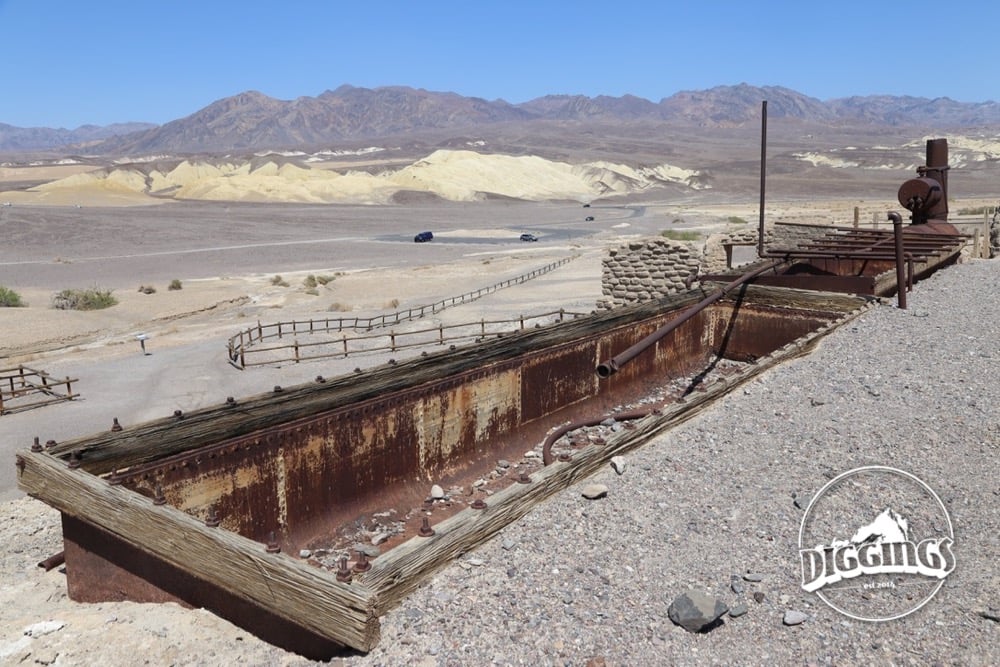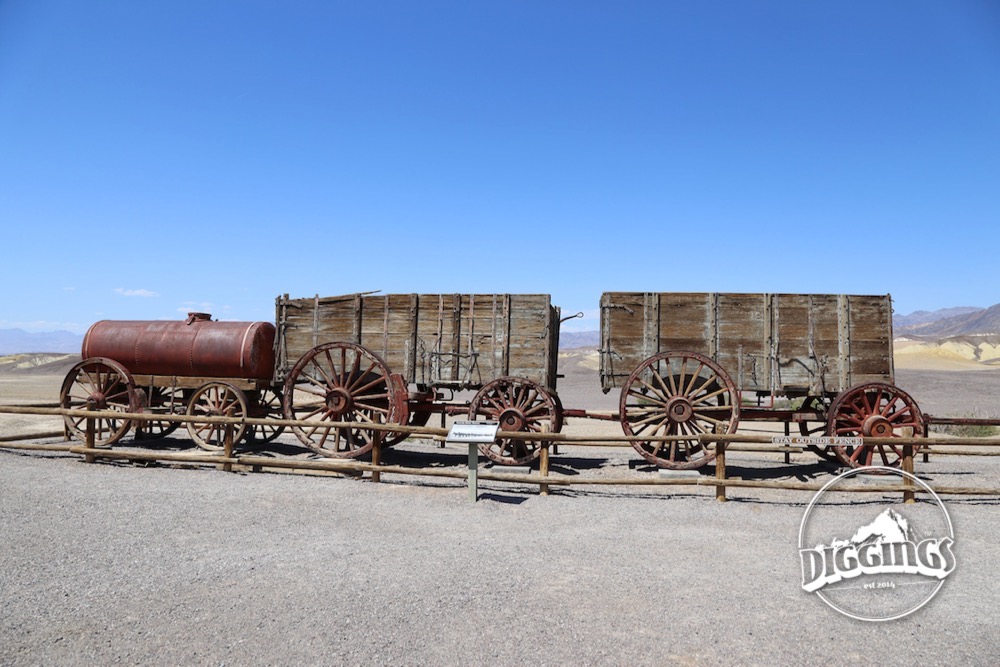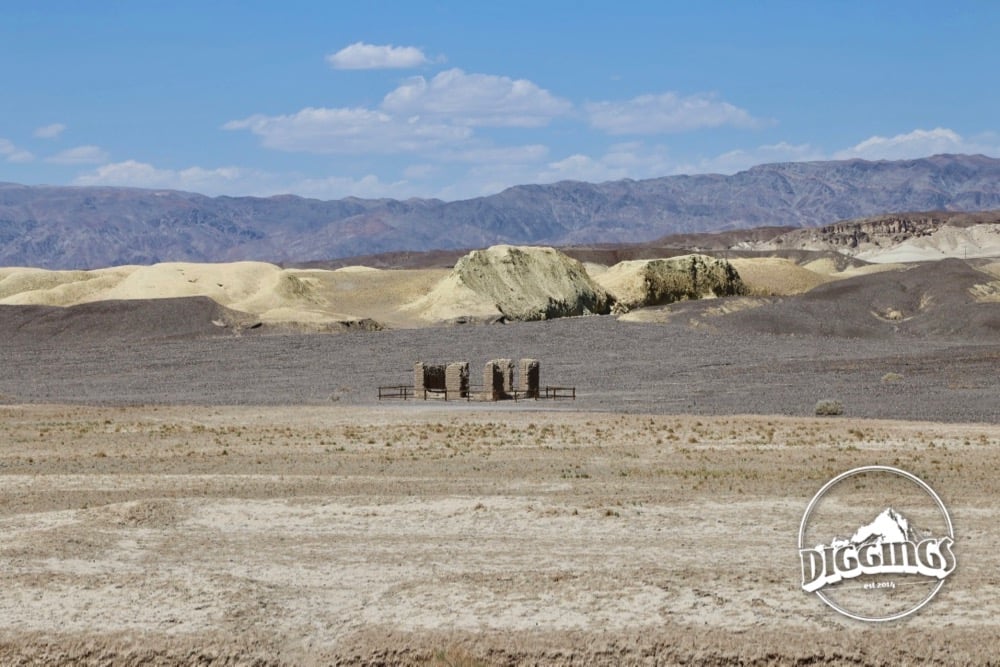Harmony Borax Works
Harmony Borax Works Interpretive Trail
Furnace Creek, CA 92328
Hours
24-hours
Admission
with entry to National Park
While Death Valley has had its share of gold and silver mines, the “White Gold of the Desert” has proven to be the deserts most profitable mineral. Borax mines and related facilities are dotted across the valley yet the Harmony Borax Works and interpretive trail is the primary attraction for visitors.
Borax: the “White Gold of the Desert”
Borax has a long and storied history. This multipurpose white salt is first collected in the dry lake beds of Tibet and transported along the Silk Road in the 8th century, AD. Since then, it has been used by blacksmiths, potters, farmers, housewives, meat packers, and morticians. It is used as a fire retardant, anti-fungal compound, texturing agent in food, insecticide, flux in metallurgy*, and many other industrial uses. It is most popularly known as a cleaning agent. The famous “20 Mule Team Borax” is a laundry booster. With so many applications, mining and refining the salt is a major industry that gained steam in the late 1800s.
Borax in Death Valley
The Furnace Creek Badlands of Death Valley are rich in borates. Water dissolved these salt minerals from hillside deposits and settled the recrystallized salts as borax. These ancient lake bed deposits were uplifted and exposed through erosion to create the yellow Furnace Creek Badlands.
In 1881, these deposits of borax are discovered by Aaron and Rosie Winters near Greenland—present day Furnace Creek Ranch—in Death Valley. William Tell Coleman and Francis Marion Smith file claims for these deposits. This has all the potential to be a large scale operation plagued by one pressing issue: how to transport borax ore from Death Valley to market.
20 Mule Teams
Transporting borax from Furnace Creek to the nearest railroad was a 165-mile desert journey. In in the 1880s, before 18 wheelers, operations fell back on a team of hearty mules. Teams of 20 mules pulled loads up to 36 tons, including the 1,200 gallons of drinking water needed to support the trek. The mules and wagons would create a train over 100 feet long. This became a symbol of the borax industry—in the logo of the Pacific Coast Borax Company and featured in commercials.
Yet, with all that pulling power, it was a highly inefficient to haul ore along with its associated waste. Enter the Harmony Borax Works to separate marketable borax from waste.
History of the Harmony Borax Works
The Harmony Borax Works are built in 1882 by San Francisco William T. Coleman to process “cottonball” borax yielded by his nearby salt flat claims. The mined ore is dumped into tanks of boiling water. Carbonated soda dissolves the borax, letting the unwanted lime and mud settle out. The borax liquid is transferred to cooling vats where the borax crystalizes on metal rods. This concentrated borax is chipped off the rods for shipping and the process repeats again.
Despite all the efforts to streamline borax mining in Death Valley, even the companies can not control certain things. Borax cannot crystalize at temperatures over 120°F. During the summer, refining operations move to the less convenient but more temperate Amargosa Borax Plant. They recommence at the Harmony Borax Works when temperatures are a little less blistering. Even during the rest of the year, cooling vats are wrapped in water soaked padding.
Harmony Borax Works operates from 1883 to 1888. At its height, the works are manned by 40 workers and produces 3-tons of borax a day. In 1888, however, Coleman’s expansive business empire collapses and the Harmony Borax Works are acquired by business partner Francis Marion Smith. Yet, the works never return to operation. New techniques in borax production shifted attention to the more profitable colemanite ore in the Calico Mountains rather than the “cottonball” borax collected off of the surface of Death Valley’s playas. The short lived Harmony Borax Works fall into ruin.
Harmony Borax Works Today
What remains of the Harmony Borax Works is added to the National Register of Historic Places on December 31, 1974. Since then, a short trail is built around the works. Visitors hike a 3/5-mile short dirt trail with interpretive plaques explaining the significance of borox and the refinement process.
*including as an alternative to mercury when extracting gold from ore




